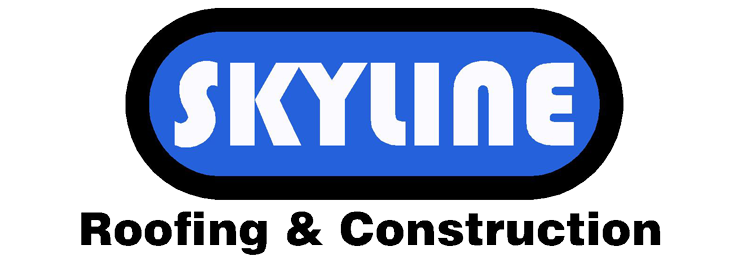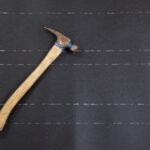
What Are Roofing Snow Guards?
Roofing snow guards are devices installed on roofs to prevent snow and ice from suddenly sliding off the roof in large, potentially dangerous sheets. They are typically mounted in strategic locations on the roof surface to help hold the snow in place, allowing it to melt or gradually release in smaller amounts. Without roof guards in place after a heavy snowfall, sliding snow and ice can be hazardous to the people and property below.
Installing snow guards is most important in areas where heavy snow accumulation is common to ensure the safety of both the building and its occupants. Speak to your roofing contractor about whether snow guards are right for your roof.
Right Types of Roof Snow Guards for Your Roof
Snow guards come in various designs, including individual brackets, rail systems, or continuous bars, and they are often made of materials like metal or plastic. It’s important to note that which type of snow guard is best for your roof depends not only on the roof type but also on other factors such as the roof pitch, local climate conditions (the amount of snow that location typically sees each year), and the aesthetic look of your home. Consulting with a roofing professional is recommended to determine the most effective and appropriate roof guard option for your specific roof type and conditions.
Let’s take a look at three types of roofing snow guards:
-
Individual Brackets
Individual brackets are discrete devices that are installed at specific points on the roof. These brackets are typically attached to the roof surface in locations strategically chosen to prevent snow and ice accumulation from sliding off in large sheets. They offer flexibility in terms of placement, and the number of brackets used can be adjusted based on the roof’s characteristics.
Individual brackets for roofing snow guards can be suitable for a variety of roof types, but their effectiveness may depend on specific factors. Here are some considerations for different roof types where individual brackets may be well-suited:
Metal roofs. Individual brackets can be easily attached to metal roofing surfaces. They are often used on standing seam metal roofs where the brackets can be clamped onto the seams.
Slate roofs. Individual brackets can be installed on slate roofs, providing targeted snow retention without compromising the aesthetics of the slate.
Tile roofs. Certain types of individual brackets are designed to be compatible with tile roofs, offering a discreet solution for preventing snow and ice slides.
Asphalt shingle roofs. Individual brackets can be used on asphalt shingle roofs to prevent sudden snow slides.
Wood shake roofs. For wood shake roofs, individual brackets can be strategically placed to hold back snow and ice.
2. Rail Systems
Rail systems consist of horizontal bars or rails that are installed across sections of the roof. The rails are attached to the roof, and they serve as a continuous barrier along certain roof sections to prevent snow from sliding. They provide a broader coverage compared to individual brackets, helping to distribute the weight of snow more evenly.
Rail system roofing snow guards are versatile and can be suitable for various roof types. Here are some roof types where rail systems are often used effectively:
Metal roofs. Rail systems can be installed on metal roofs, providing a continuous barrier to prevent snow and ice accumulation.
Standing seam metal roofs. Standing seam metal roofs are well-suited for rail systems, as the rails can be securely attached to the seams without penetrating the roofing material.
Corrugated metal roofs. Rail systems can be adapted for corrugated metal roofs, offering a comprehensive solution for snow retention.
Commercial flat roofs. Flat roofs, commonly found in commercial buildings, can benefit from rail systems to prevent snow slides.
Low-slope roofs. Roofs with low slopes may utilize rail systems to distribute the load of retained snow more evenly.
Asphalt shingle roofs. Some rail systems are designed to work with asphalt shingle roofs, providing a continuous guard against sliding snow.
Tile roofs. Certain tile roofs can accommodate rail systems, especially in regions where heavy snowfall is a concern.
Rail systems offer broad coverage and can be customized to fit the specific requirements of different roof types. However, it’s crucial to consult with a roofing professional to ensure proper installation and compatibility with your particular roof structure.
3. Continuous Bars
Continuous bars are long, uninterrupted bars that run horizontally along the roof’s edges or other strategic locations. They are mounted continuously along the roof, forming a barrier to hold back snow and ice. Continuous bars can provide a sleek and continuous appearance on the roof without the interruption of individual brackets.
Continuous bars roofing snow guards are suitable for various roof types, providing a continuous and streamlined solution for preventing snow and ice slides. Here are some roof types where continuous bars are commonly used:
Metal roofs. Continuous bars can be effectively installed on metal roofs, providing a sleek and continuous barrier for snow retention.
Standing seam metal roofs. Continuous bars are well-suited for standing seam metal roofs, where they can be securely attached without penetrating the seams.
Commercial flat roofs. Continuous bars can be installed on flat roofs commonly found in commercial buildings, offering comprehensive snow retention.
Low-slope roofs. Roofs with low slopes benefit from continuous bars to distribute the load of retained snow more evenly.
Asphalt shingle roofs. Certain continuous bar systems are designed for compatibility with asphalt shingle roofs, providing a continuous guard against sliding snow.
Tile roofs. Continuous bars can be adapted for use on tile roofs, especially in regions where heavy snowfall is a concern.
Continuous bars provide a clean and continuous appearance along the roofline, making them suitable for various architectural styles. As with any roofing snow guard system, it’s important to consult with a roofing professional to ensure proper installation and compatibility with your specific roof structure and conditions.
Who Installs Roofing Snow Guards?
Roofing snow guards are typically installed by roofing professionals or contractors with experience in handling roof-related installations. It’s important to hire a qualified and experienced roofing contractor for the installation of snow guards to ensure they are properly placed and securely attached to the roof.
When considering the installation of snow guards, it’s advisable to consult with a roofing expert who can assess your specific roofing structure, pitch, and local climate conditions to determine the most effective type and placement of snow guards for your particular situation.
In some cases, manufacturers of snow guards may also provide installation guidelines, and some homeowners may choose to install them on their own. However, if you’re not experienced in roofing installations, it’s generally recommended to seek professional assistance to ensure the snow guards are correctly installed and provide the intended safety benefits.
Trust Skyline Roofing & Construction for Your Roofing Needs
At Skyline Roofing & Construction our roofing professionals always strive to add value to your home or business for the long term. Contact us today if you are looking for an experienced, licensed roofing contractor to install, repair, or maintain your roof. Skyline Roofing is located in Bellingham, WA and we presently serve Whatcom, Skagit, and Island Counties.
License #SKYLIRC854Q








No Comments
Sorry, the comment form is closed at this time.